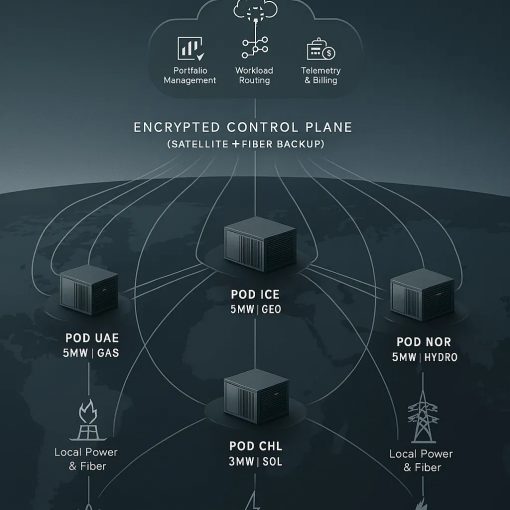Introduction:
This is part 2 of the Airship series: https://ideaswiz.com/navigating-the-skies-the-modern-airship-renaissance
In the ever-evolving landscape of transportation and development, the case for the use of airships in Africa and developing countries emerges as a compelling and transformative solution. These Airships have the potential to serve as accelerators of development, fostering progress in multiple sectors while addressing critical challenges. This article presents a comprehensive case for the introduction of airships in these regions, focusing on their potential to bridge infrastructure gaps, enhance environmental sustainability, and harness untapped human and natural resources.
Accelerating Development through Airships
1. Transportation of Goods:
– Airships offer a lifeline to landlocked countries in Africa by providing a reliable means to transport goods across vast distances. They can reach remote regions with limited access, unlocking economic potential and reducing isolation.
2. Intercountry Trade:
– In regions where infrastructure remains underdeveloped, airships become game-changers by facilitating intercountry trade. They bridge the gap between nations, fostering economic cooperation and growth.
3. Food Preservation and Transportation:
– Airships hold the key to addressing the pressing issue of food preservation and transportation. In areas lacking proper infrastructure, they can significantly reduce food spoilage and waste, ensuring that more of the harvest reaches processing and preservation solutions which are usually located in other area in a country.
4. Scaling the Tourism Industry:
– Africa boasts a wealth of natural beauty and cultural heritage. Airships can help develop the nascent tourism industry by offering unique and eco-friendly travel experiences, attracting both local and international tourists.
5. Low Competition and Ample Opportunities:
– Africa offers a less crowded airspace, providing an ideal environment to test and implement airship solutions. With limited competition for cargo, airships can establish themselves as efficient and cost-effective transport options.
6. Improved Communications Architecture:
– Airships can also serve as communication hubs, improving connectivity in remote areas. This enhanced communication architecture can further foster economic growth and development.
7. Surveillance airships hold immense potential in the context of African and developing countries. They serve as invaluable tools for surveillance, providing persistent, versatile, and unobtrusive observation capabilities. With their extended operational endurance, capacity to transport diverse surveillance equipment, and adaptability to a wide range of mission needs, these airships emerge as essential assets across various applications. Their significance extends to bolstering security and defence measures, monitoring environmental conditions. A particular use case is in reducing poaching as it addresses accessibility in the vast and unforgiving terrain
8. The utilization of airships in humanitarian missions across Africa and developing nations offers a transformative approach to addressing critical challenges. These versatile and agile airships play a pivotal role in delivering aid, supplies, and support to remote and inaccessible regions. Their unique ability to access hard-to-reach areas, transport essential resources, and provide aerial surveillance significantly enhances the effectiveness of humanitarian efforts. With their capacity to overcome infrastructure limitations and natural disasters, airships can serve as vital tools for disaster response, medical outreach, and relief operations, ultimately contributing to saving lives and alleviating suffering in some of the world’s most underserved communities.
9. Agricultural Support: Airships equipped with sensors and imaging technology can assist in precision agriculture. They can monitor crop health, soil conditions, and irrigation needs across large agricultural areas, helping farmers optimize their practices and crop yields.
Environmental Sustainability
1. Creating a Sustainable Future:
– Airships align with the global pursuit of sustainability. Their eco-friendly operation, low carbon emissions, and reduced fuel consumption contribute to a sustainable future for regions that are especially vulnerable to climate change.
2. Implementing Environmental Solutions:
– By embracing airship technology, Africa and developing countries can implement environmentally responsible solutions for transportation and trade, mitigating the environmental impact of traditional modes of transport.
3. Harnessing Available Manpower:
– These regions are rich in manpower resources, including a significant number of unemployed graduates. Airship projects can provide employment opportunities, driving economic empowerment and skill development.
4. Abundance of Natural Resources:
– Africa is endowed with abundant natural resources. Airships can facilitate the extraction and transport of these resources efficiently, ensuring their responsible utilization for the benefit of local economies.
Further Analysis
Implementing the use of modern airships in Africa or developing countries is indeed promising, but it comes with several challenges when considering the PESTLE (Political, Economic, Sociocultural, Technological, Legal, and Environmental) factors. Here’s an analysis of these challenges:
Political Challenges:
1. Regulatory Framework: Establishing clear and supportive regulations for airship operations can be challenging. Many developing countries may not have comprehensive aviation regulations in place.
2. Political Stability: Political instability and governance issues in some regions can disrupt airship projects, affecting their continuity and success.
Economic Challenges:
1. Initial Investment: Developing and acquiring airship technology involves a significant upfront investment. Securing funding and financial resources can be a hurdle in countries with limited economic means.
2. Operational Costs: While airships have lower operational costs compared to traditional aircraft, managing ongoing expenses can still be challenging, especially in regions with limited access to maintenance and repair facilities.
Sociocultural Challenges:
1. Acceptance and Perception: Convincing local populations and communities of the safety, benefits, and potential of airships may require extensive education and outreach efforts, especially in areas where these technologies are unfamiliar.
2. Cultural Practices: Sociocultural factors may affect airship operations, particularly in areas where certain practices or beliefs restrict airspace usage or project development.
Technological Challenges:
1. Technology Adoption: Embracing new technologies can be slow in regions with limited access to cutting-edge infrastructure and expertise. Training and capacity building may be required.
2. Infrastructure Compatibility: Modern airships require specific infrastructure for landing, refueling, and maintenance. Adapting or building this infrastructure can be expensive and time-consuming.
Legal Challenges:
1. International Regulations: Ensuring compliance with international aviation regulations and standards can be complex, and developing countries may face challenges in aligning their legal frameworks with global requirements.
2. Liability and Insurance: Establishing insurance and liability mechanisms for airship operations can be intricate, particularly in regions with less developed insurance markets.
Environmental Challenges:
1. Environmental Impact: While airships are more environmentally friendly than traditional aircraft, their impact on local ecosystems and landscapes must be carefully assessed to avoid unintended consequences.
2. Weather and Climate: Airship operations are sensitive to weather conditions, and regions prone to extreme weather events or changing climate patterns may face disruptions.
Navigating these PESTLE challenges requires a comprehensive approach that involves collaboration among governments, regulatory bodies, investors, local communities, and the private sector. Mitigating these challenges is crucial to unlocking the potential of modern airships for development and sustainability in Africa and developing countries.
Conclusion: The case for the use of airships in Africa and developing countries is multifaceted, promising to usher in a new era of development, sustainability, and opportunity. These majestic vessels have the power to bridge gaps, preserve food, scale industries, and create a brighter future. By embracing airships, these regions can not only address pressing challenges but also unlock their immense potential, ultimately contributing to a more prosperous and sustainable world. It’s time to let the skies be the limit for development in Africa and beyond
See Part 3: Airships: The hard part, making it work!!! https://ideaswiz.com/airships-the-hard-part-making-it-work




2 thoughts on “Airships: Elevating development, as a catalyst for progress in Africa and developing countries. Pt 2”